Using Historical Footage (Middle School)
What is the film’s argument and how is it made? What was the relocation and internment like for Americans of Japanese descent?
What is the film’s argument and how is it made? What was the relocation and internment like for Americans of Japanese descent?
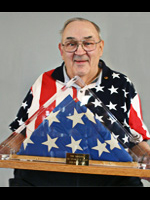
StoryCorps is a nonprofit organization dedicated to collecting and preserving the stories of people across the U.S. Founded in 2003, it has collected more than 15,000 stories from people in all walks of life—immigrants, veterans, those that suffer from debilitating diseases, lovers, September 11th survivors, and many more. Each recorded conversation includes two or three people, often grandchildren interviewing grandparents, old friends interviewing each other, or children remembering their parents. Clips, usually between two and five minutes, from hundreds of these stories are available.
The clips are keyword searchable and browseable by category: Angels & Mentors, Discovery, Friendship, Griot, Growing Up, Hurricane Katrina, Identity, Romance, September 11, Struggle, Witness, Wisdom, and Work. Many people discuss their involvement in World War II or the Vietnam War, and many more talk about how they met their spouses or coped with segregation. Always thought-provoking, and often moving, these clips can expose the more human side of major 20th-century events.
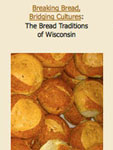
This website is the virtual home of the Center for the Study of Upper Midwestern Culture, devoted to preserving the languages and cultural traditions of this region, roughly defined as Minnesota, Wisconsin, and Michigan's Upper Peninsula. While originally home to Woodland and Plains American Indians, and then a varied population of European American populations, this region more recently has welcomed increasing numbers of African, Asian, and Hispanic immigrants.
A glimpse at some of the materials the Center has gathered is available through six virtual exhibits accessible through the website. These exhibits include one devoted to Heikki Lunta, a folk legend born during the reawakening of Finnish ethnic consciousness on Michigan's Upper Peninsula in the 1970s; another on bread-making traditions in Wisconsin, including several images from German American cookbooks; and another including images depicting European American ethnic life on the South Shore of Lake Superior; other exhibits feature German American folk music in Wisconsin, some of which dates to the 1930s.
The website also features 20 video podcasts on aspects of community life in southwestern Wisconsin, as well as extensive guides to archival collections on Upper Midwestern life at physical archives at the University of Wisconsin and throughout the region.
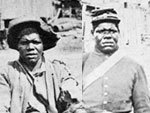
HERB consists of three TAH projects, History for All, History Matters, and Our American Democracy, as well as a wide variety of non-TAH collections, primarily related to social history. If you're wondering where the name came from, HERB's namesake is Herbert Gutman, a labor historian and co-founder of the American Social History Project/Center for Media and Learning at The Graduate Center, City University of New York, which has been involved with K-12 education since 1989.
On HERB, you can keyword search for resources such as prints, posters, advertisements, and other artworks; oral history transcripts; statistics; documentary-viewing guides; timelines; activities; worksheets; explanation by historians; letters; songs; and more. From the main page, you can also browse by selecting your time period of interest or a major theme—immigration and migration, civil rights and citizenship, slavery and abolition, work, reading supports, expansion and imperialism, gender and sexuality, Civil War, or social movements.
Search results do not give suggested grade levels for any of the materials, including classroom activities, so be prepared to do some thinking about what might be best for your classroom's collective interests and ability levels.
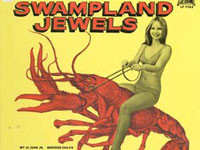
An exhibit devoted to the Goldband Recording Corporation, a Southern regional recording company, located in Lake Charles, LA. From its inception in the mid-1940s, Goldband produced recordings in "some of the South's most important and distinctive musical styles and sounds, including Cajun, zydeco, blues, rhythm and blues, rockabilly, and swamp pop."
The site includes 23 selections in both streaming MP3 and Real Audio formats; short biographical notes of 100200 words in length on 24 artists who recorded at Goldband studio—including Freddie Fender and Dolly Parton at age 13; 32 photographs; and a 1,600-word essay on musical genres.
Provides three links to related sites, a 10-title bibliography, and an inventory of the full collection of corporate materials available at the UNC Library. Valuable for those studying Southern culture, music history, and postwar American popular culture.
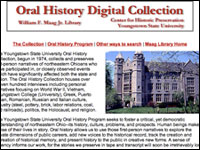
These full-text first-person narratives present the voices of more than 2,000 people from northeast Ohio discussing issues significant to the state and the nation. These oral histories, collected since 1974, focus on a range of topics such as ethnic culture, including African American, Greek, Irish, Italian, Jewish, Puerto Rican, Romanian, and Russian, and industry, such as steel, pottery, brick, coal, and railroads.
Others discuss labor relations, including women in labor unions, wars (World War II, Vietnam, Gulf War), college life (including the shootings by National Guard troops at Kent State in 1970), the Holocaust, and religion. Subject access is available through more than 200 topics listed alphabetically.
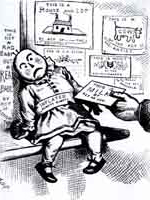
This site introduces the American Social History Project/Center for Media and Learning (ASHP/CML), an organization located at the City University of New York (CUNY) that "seeks to revitalize interest in history by challenging the traditional ways that people learn about the past," with a particular emphasis on labor history and social history. The site includes information about ASHP/CML books, documentary films, CD-ROMs, Internet projects, and educational programs, as well as five articles by staff members and numerous links to history resources.
"Heaven Will Protect the Working Girl: Immigrant Women in the Turn-of-the-Century City" presents selected photographs, illustrations, and accompanying short explanatory texts intended for use with a ASHP/CML documentary of the same name. Among the Project's current endeavors is "an intellectual and spatial exploration of P. T. Barnum's American Museum," entitled The Lost Museum, which burned down under mysterious circumstances in 1865. With the Center for History and New Media at George Mason University, ASHP/CML produces History Matters.
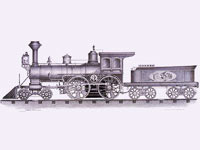
What was Ohio like during the Old West?
It depends on what you mean by “the Old West.”
In 1828 a newspaper editor in Columbia, SC, referred to Kentucky as the “wild West.” About the same time, a group of humor writers were producing stories about the “Southwest” referring to Kentucky, Arkansas, northern Mississippi, and Alabama. The stories certainly made the area seem wild: they often featured untamed boasting frontiersmen fighting one another with long knives, gouging out eyes, wrestling bears, and generally having themselves a wonderful time.
Even earlier, around 1800, the “West” referred to land that lay to the west of the Appalachian mountains and so would have included the territory that is now the state of Ohio. That territory was opened to settlement after the Revolutionary War as part of the Northwest Territory. In the territory’s early years, the state of Connecticut claimed the northern part of what is now Ohio, referred to as the “Western Reserve.”
If you mean, by the phrase “the Old West,” the years portrayed in Western movies, dime novels, and “those thrilling days of yesteryear” when settlers moved across the Great Plains toward the Rocky Mountains and beyond, then that refers, very roughly speaking, to the period between the Civil War and the Spanish-American War.
Even at the beginning of the postwar period, Ohio had been thoroughly domesticated, in the sense that it was neither “wild” nor “West.” It was geographically part of the middle of the country and had been cleared for farmland for decades. Parts of the state were heavily industrialized, especially in the cities on and near Lake Erie (Toledo, Sandusky, Akron, Youngtown, and Cleveland) and the cities in the southwest part of the state (Dayton and Cincinnati) that depended on the Ohio River for transporting goods. This was the case even before the auto industry further transformed the commerce of the state (a network of railroads also crisscrossed Ohio by that time). According to the Federal Census, Ohio’s population in 1870 was a little over two and half million and by 1900 was four million, with most of the population being of German, Irish, English, Polish, and Italian ancestry.
R. Douglas Hurt, The Ohio Frontier: Crucible of the Old Northwest, 1720-1830. Bloomington: Indiana University Press, 1996.
Philip D. Jordan, Ohio Comes of Age: 1873-1900. Volume 5 of Carl Wittke, ed., The History of the State of Ohio. Columbus, Oh.: Ohio State Archaeological and Historical Society, 1944.
George W. Knepper, Ohio and Its People. 3rd edition. Kent, Oh.: Kent State University Press, 2003.
Grain elevator, “Operated by Union Railroad Elevator Company, Toledo, Ohio,” Calvert Lithographic Company, 1882. Prints and Photographs Division, Library of Congress.
“Railroad engine.” W. J. Morgan, Cleveland, Ohio, 1874. Prints and Photographs Division, Library of Congress.
The Miller Place - Mount Sinai Historical Society has two historical properties that can be toured in the summer or by appointment at other times of the year. The Miller House was built in 1720 on land bought by Andrew Miller Sr., an English immigrant who worked as a cooper, in 1670. The other property, the 1820 Daniel Hawkins House was home of the Hawkins family from Setauket and is located just east of the Miller house.
Tours are available upon appointment. There is no specific educational programming for school groups so the teacher will have to work with the museum to design a field trip.
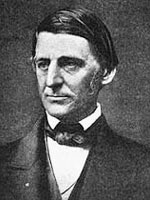
Provides thousands of links to information on and texts by more than 300 American writers from 1620 to the present. Users can search in five chronological periods for links to timelines, author's sites, related resources, music and visual arts, and "social contexts." Also contains specific categories for electronic text collections, U.S. History, American Studies, poetry, movements and genres, Southern literature, women writers, literary theory, reference works, and "minority literature/multi-cultural resources," including categories for African-American, Asian-American, Jewish-American, and Latino/Latina writers. Authors represented include famous literary figures such as Louisa May Alcott (1832-88), Anna Bradstreet (ca. 1612-72), Edgar Rice Burroughs (1875-1950), Emily Dickinson (1830-86), and Ralph Ellison (1914-94); important public figures, such as William Byrd (1674-1744) and Frederick Douglass (1818-95); and lesser-known figures, such as John Woolman (1720-72) and Amelia Edith Barr (1831-1919).
Offers images of many writers, links in Japanese, a section devoted to Canadian authors, a master list of authors in alphabetical order, and "two site-specific search engines" for word searches of this site and others. Last updated in December 2001, many links are no longer operable; however, as a gateway, it offers an abundance of usable links in a well-designed format for those needing resources on American writers and their times.